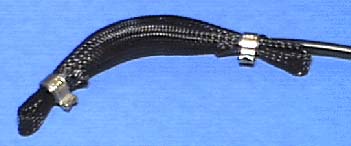
This feature is utilized by the research in many "Bio-Robotics" projects institute by numerous researchers. In published papers air muscles are also referred to as; McKibben Air Muscles, McKibben Pneumatic Artificial Muscle, Rubbertuator and as I refer to them simply as air muscle(s).
Applications
Air muscles have applications in robotics, biorobotics, biomechanics, artificial limb replacement and industry. The principle reasons experimenters and hobbyists will like air muscles are ease of use (as compared to standard pneumatic cylinders) and simple construction. Air muscles are soft, lightweight and compliant, have a high power to weight ratio (400:1), can be twisted axially and used on unaligned mounting and provide contractive force around bends, (see robot wars near the end of this article). Air muscles may also be used underwater.

